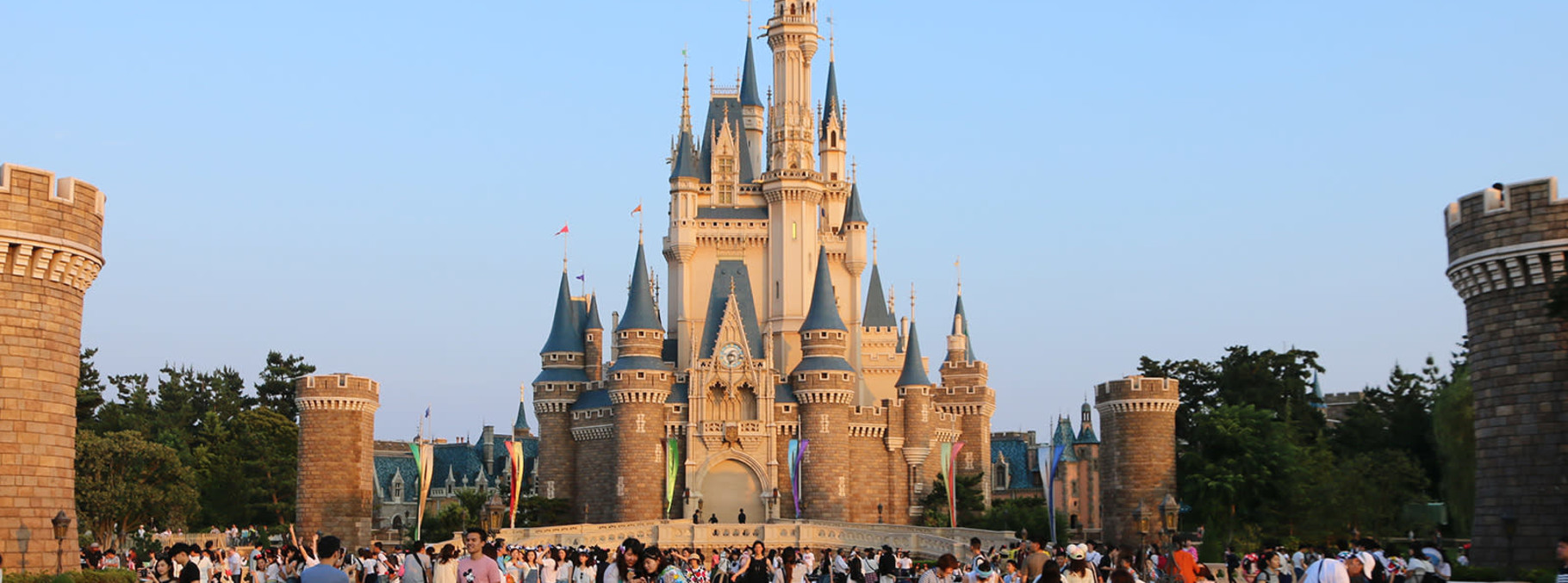Okinawa Zento Eisa Matsuri

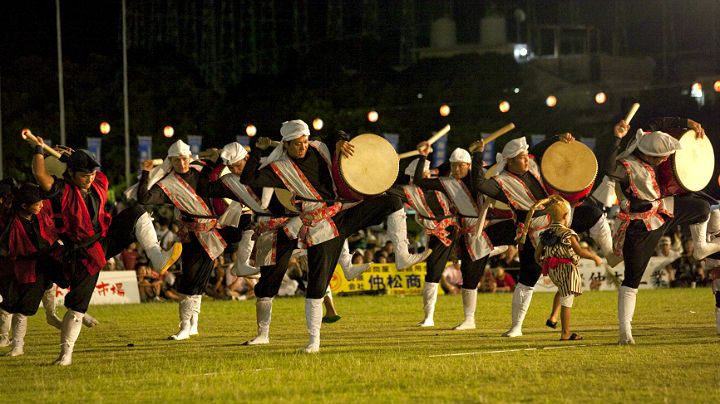
(Source: ©OCVB)
First Day : Michi-junee
The parade of Michi-junee is held on the first day of Eisa Matsuri. Teams of young men from each region perform Eisa taiko dances in the area of Goya and Jujiro in Okinawa city. The performance is very energetic, and you can't take your eyes off them.
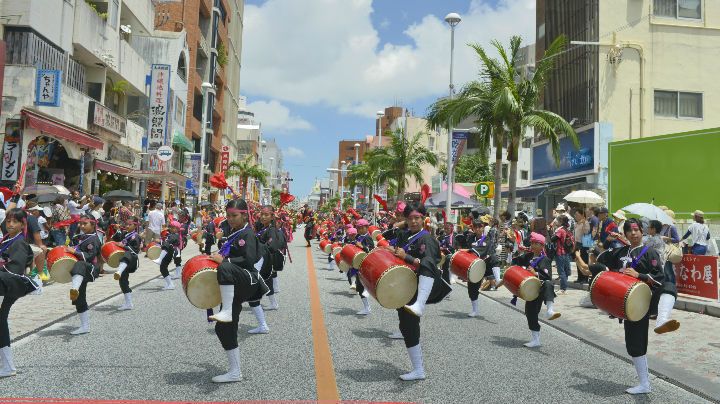
(Source: ©OCVB)
Second Day : Okinawa-Shi Seinen Matsuri
On the the second day of the festival, teams of young men from Okinawa city which hosts this festival perform Eisa. Over 10 groups of performers participate in this event. Each group entertains the audience with their unique costumes and performances.
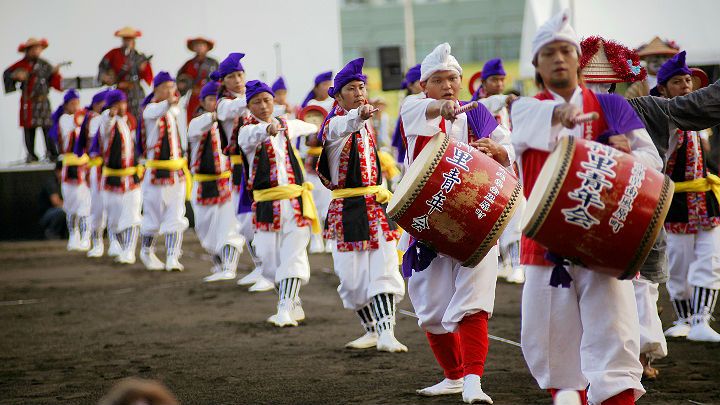
(Source: ©OCVB)
Last Day : Okinawa Zento EIsa Matsuri
Teams selected from all over Okinawa perform Eisa on the last day as a finale of this festival. They have men's, ladies' , co-ed teams, representing not only the main island of Okinawa but also teams from the remote islands. This is a splendid opportunity to see the stunning performances of all the great teams.
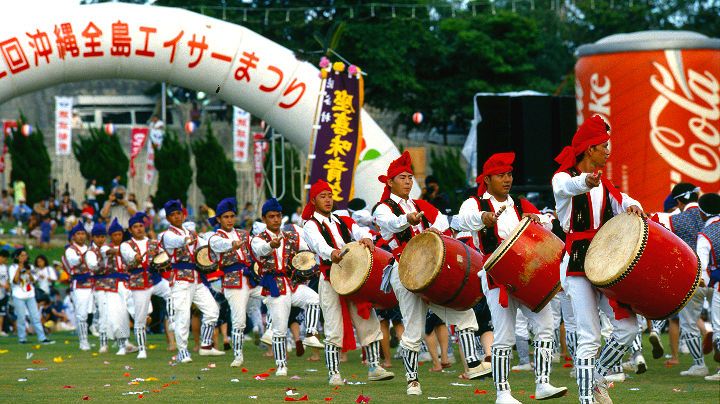
(Source: ©OCVB)
Funky Chondara Dancers
You can't help noticing a funny, white-faced dancer in each group. He has funky makeup and dances sloppily among the serious performers. You might wonder "Who is that person?" As a matter of fact, he belongs to the team. He is a jester called chondara and dances to spice up the performance. Their expressions and movement are great fun to watch.
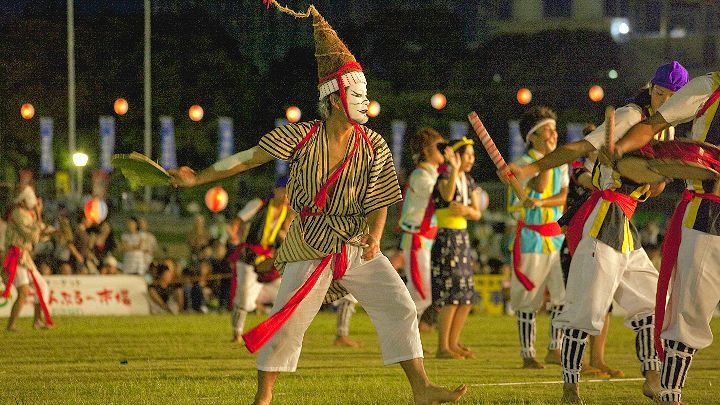
(Source: ©OCVB)
Time for Kachashi
Everybody participates in Kachashi dance and shares the joy. After the Eisa performances on the second and last day, the performers and the audience get together and dance Kachashi. Anybody can join, and you don't have to be a good dancer, so why don't you dance with the locals!
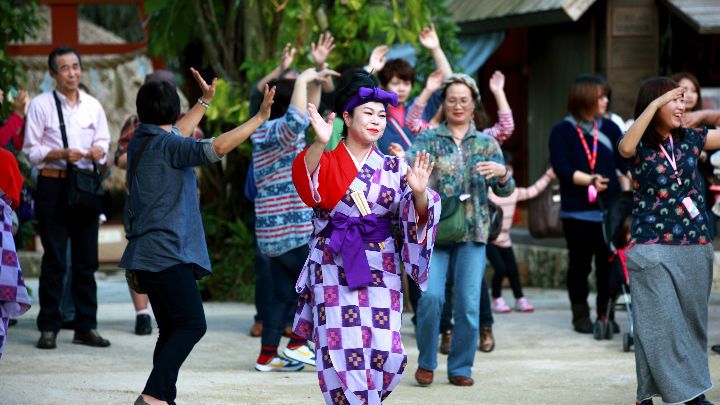
(Source: ©OCVB)
Famous Okinawa Soba
Okinawa soba is a regional delicacy of Okinawa. While it's called soba, it is actually not made from buckwheat flour. It is made from regular wheat flour. 150,000 bowls of Okinawa soba are said to be consumed every day in the prefecture. The price is reasonable, and you find it in any restaurant, so you don't want to miss this soul food of Okinawa.
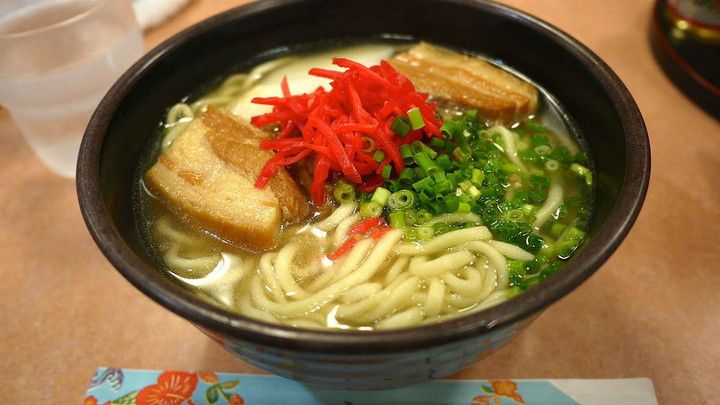
(Source: shima-risu / PIXTA)

(Source: ©OCVB)
First Day : Michi-junee
The parade of Michi-junee is held on the first day of Eisa Matsuri. Teams of young men from each region perform Eisa taiko dances in the area of Goya and Jujiro in Okinawa city. The performance is very energetic, and you can't take your eyes off them.

(Source: ©OCVB)
Second Day : Okinawa-Shi Seinen Matsuri
On the the second day of the festival, teams of young men from Okinawa city which hosts this festival perform Eisa. Over 10 groups of performers participate in this event. Each group entertains the audience with their unique costumes and performances.

(Source: ©OCVB)
Last Day : Okinawa Zento EIsa Matsuri
Teams selected from all over Okinawa perform Eisa on the last day as a finale of this festival. They have men's, ladies' , co-ed teams, representing not only the main island of Okinawa but also teams from the remote islands. This is a splendid opportunity to see the stunning performances of all the great teams.

(Source: ©OCVB)
Funky Chondara Dancers
You can't help noticing a funny, white-faced dancer in each group. He has funky makeup and dances sloppily among the serious performers. You might wonder "Who is that person?" As a matter of fact, he belongs to the team. He is a jester called chondara and dances to spice up the performance. Their expressions and movement are great fun to watch.

(Source: ©OCVB)
Time for Kachashi
Everybody participates in Kachashi dance and shares the joy. After the Eisa performances on the second and last day, the performers and the audience get together and dance Kachashi. Anybody can join, and you don't have to be a good dancer, so why don't you dance with the locals!

(Source: ©OCVB)
Famous Okinawa Soba
Okinawa soba is a regional delicacy of Okinawa. While it's called soba, it is actually not made from buckwheat flour. It is made from regular wheat flour. 150,000 bowls of Okinawa soba are said to be consumed every day in the prefecture. The price is reasonable, and you find it in any restaurant, so you don't want to miss this soul food of Okinawa.

(Source: shima-risu / PIXTA)



